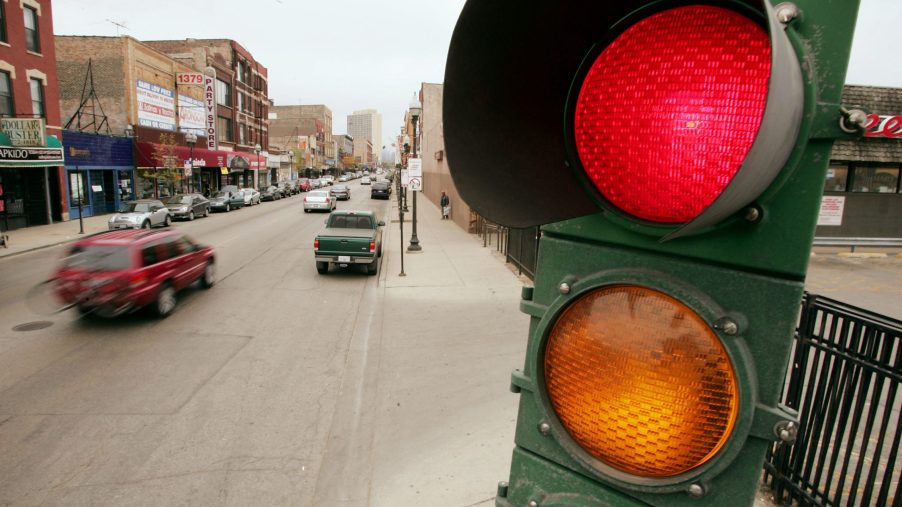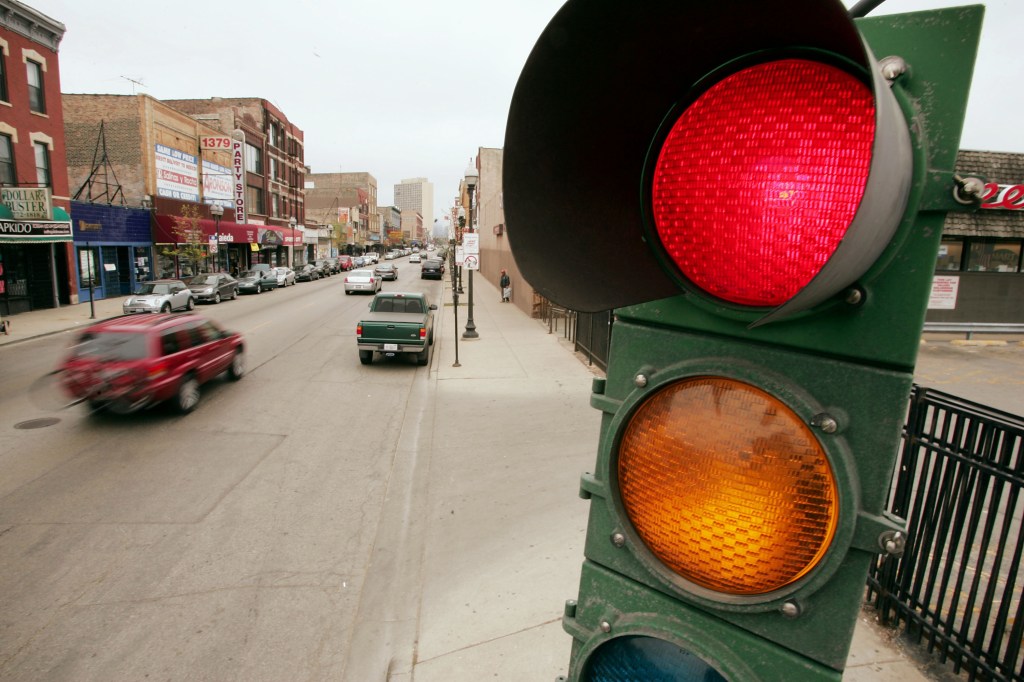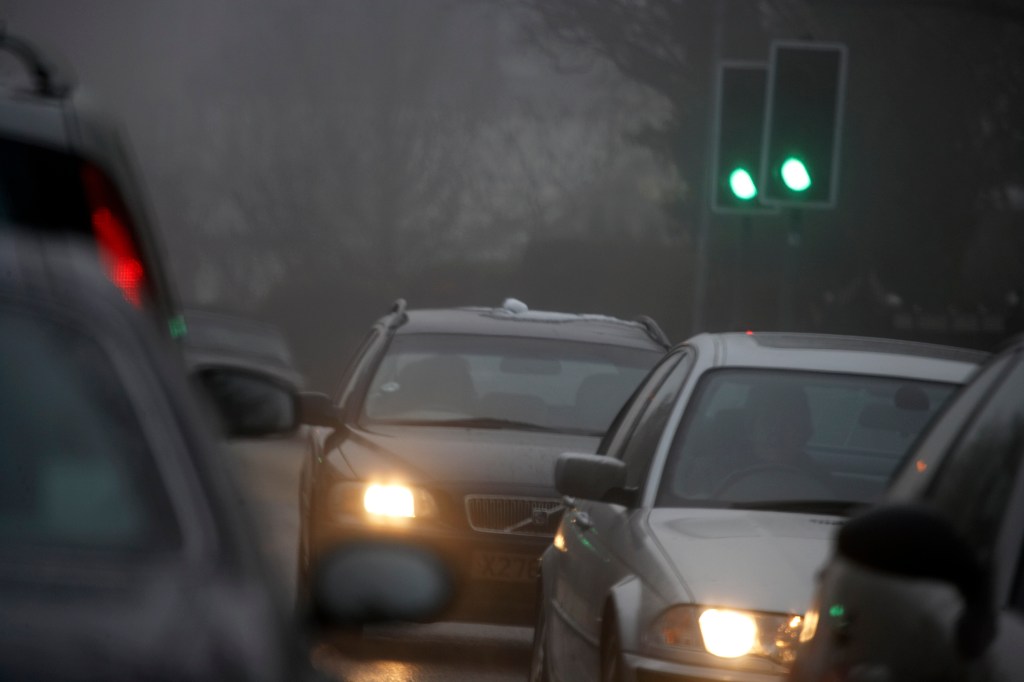
Will Flashing Your Headlights Make a Red Light Turn Green?
Have you ever been driving in your car and felt like you’ve hit every red light possible on your commute? Sure, it’s happened to all of us. And the worst part is when you’re sitting at a red light with no one around you for miles as you patiently wait for it to change. Instead of waiting, it has become a popular thought that flashing your high beams can get that stubborn red light to turn green quicker than usual. But is that really true?
How traffic lights work
First things first, it’s important to understand how traffic lights detect your car when you pull up to them. According to WikiHow, there are three different methods in which a traffic light can detect a waiting car:
- An inductive loop detector: When you pull up to a traffic light, look for any markings in front of the intersection. These markings typically denote that an inductive loop detector was installed to detect the conductive metal in cars, bikes, and motorcycles.
- Camera detection: Have you ever seen a small camera sitting atop the traffic light? That’s actually used for detecting the presence of cars waiting for the light to change. However, some of them are there to detect red-light runners.
- Fixed timed operation: If a traffic light doesn’t have an inductive loop detector or a camera, then it could be activated by a timer. These types of traffic lights are typically found in areas with heavy congestion.

Can you make the light turn green by flashing your high beams?
Unfortunately, no. If you come across a traffic light that uses camera detection, then you might think that rapidly flashing your car’s high beams could make it change faster. However, that’s not the case, as Snopes confirms. According to the source, the traffic light cameras are programmed to detect a rapid-fire series of flashes, a rate equivalent to 14 flashes per second.
So unless you can fire off that many flashes per second like a skilled high beam machine, you’re going to have to wait for the light to turn green on its own. Traffic lights are mainly programmed to change at will for emergency vehicles like police cars, fire trucks, and ambulances and not your old Honda Civic.

What can you do to make the light turn green?
The next time you find yourself stuck at a stubborn red light, make sure that your car is positioned correctly in front of the intersection. By ensuring that your car is correctly hovering over the inductive loop detector or in front of the camera, it will trigger the traffic light to sense that a car is waiting and begin to change.
There are some devices on the market known as “mobile infrared transmitters” (MIRT), which you can install on your car and effectively change the traffic lights quicker since they mimic emergency vehicle flashers. However, those devices are illegal and if you get caught using them, you could end up getting fined or punished accordingly.
So the next time a friend tells you that flashing their high beams made a light change quicker, just note that it’s most likely a coincidence that they pulled up at the right time.



